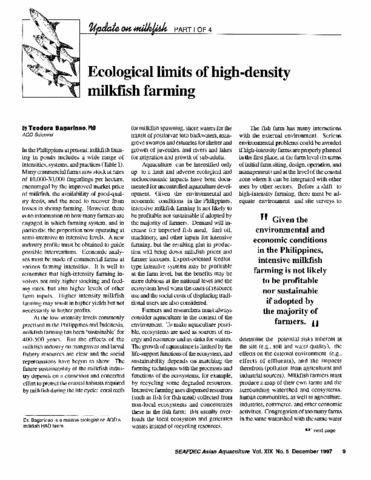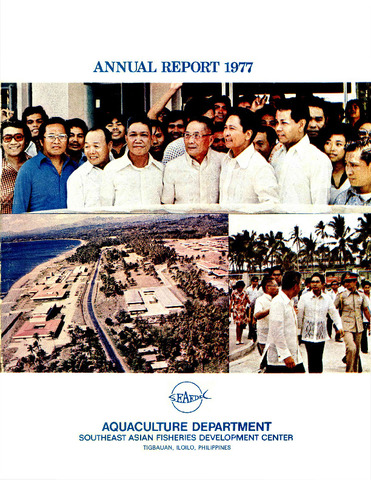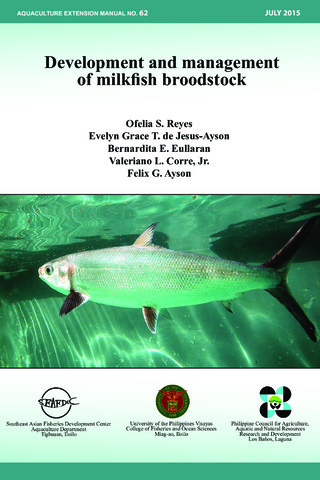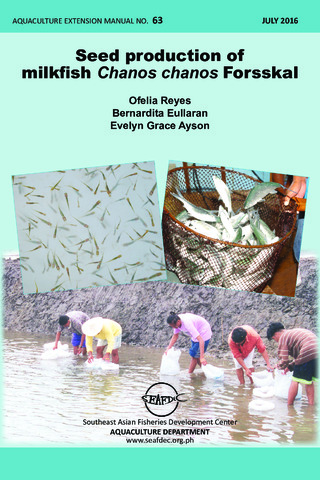Ecological limits of high-density milkfish farming
Share
Abstract
In the Philippines at present, milkfish farming in ponds includes a wide range of intensities, systems and practices. To make aquaculture possible, ecosystems are used as sources of energy and resources and as sinks for wastes. The growth of aquaculture is limited by the life-support functions of the ecosystem, and sustainability depends on matching the farming techniques with the processes and functions of the ecosystems, for example, by recycling some degraded resources. The fish farm has many interactions with the external environment. Serious environmental problems may be avoided if high-intensity farms are properly planned in the first place, at the farm level and at the level of the coastal zone where it can be integrated with other uses by other sectors. It is believed that the key to immediate success in the mass production of milkfish for local consumption and for export of value-added forms may be in semi-intensive farming at target yields of 3 tons per ha per year, double the current national average. Intensive milkfish farming will be limited by environmental, resource and market constraints. Integrated intensive farming systems are the appropriate long-term response to the triple needs of the next century: more food, more income, and more jobs for more people, all from less land, less resources, and less non-renewable energy.
Suggested Citation
Bagarinao, T. (1997). Ecological limits of high-density milkfish farming. SEAFDEC Asian Aquaculture , 19(5), 9-11. http://hdl.handle.net/10862/1771
Subject
Taxonomic term
Collections
Related items
Showing items related by title, author, creator and subject.
-
Annual report 1977
Southeast Asian Fisheries Development Center, Aquaculture Department (Aquaculture Department, Southeast Asian Fisheries Development Center, 1978) -
Development and management of milkfish broodstock
Reyes, Ofelia S.; de Jesus-Ayson, Evelyn Grace T.; Eullaran, Bernadita E.; Corre Jr., Valeriano L.; Ayson, Felix G. (Aquaculture Department, Southeast Asian Fisheries Development Center, 2015)The manual provides developed and refined techniques for collection and transport of spawned eggs and larvae, as well as larval rearing. It also describes the necessary facilities for maintaining milkfish broodstock. Guidelines ... -
Seed production of milkfish Chanos chanos Forsskal
Reyes, Ofelia; Eullaran, Bernadita; Ayson, Evelyn Grace (Aquaculture Department, Southeast Asian Fisheries Development Center, 2016)A 26-page manual describing the site selection, hatchery design, spawning, larval rearing, natural food production, and economic analysis for milkfish.






